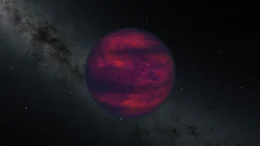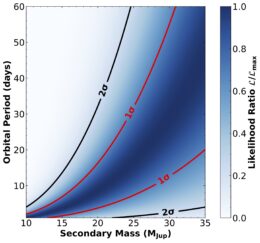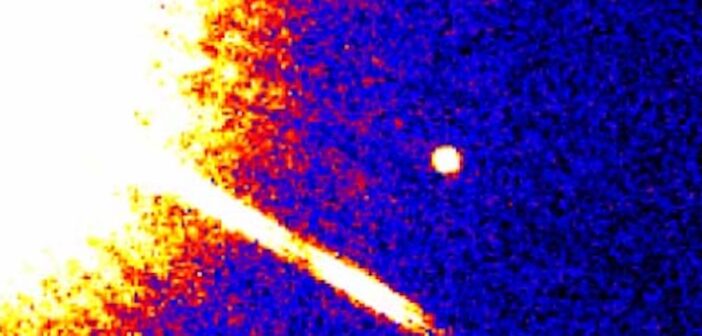Astronomers recently discovered a companion to Gliese 229 B, the first confidently identified brown dwarf. This discovery resolves the conflict between Gliese 229 B’s observed mass and the predictions of evolutionary models, potentially illuminating the nature of other poorly understood brown dwarf systems as well.
First in Its Class

An illustration of a brown dwarf. Brown dwarfs aren’t actually brown, likely spanning a range of colors from reddish-orange to nearly black. [NASA/JPL-Caltech]
While improved telescopes have advanced our understanding of brown dwarfs, there’s still much we don’t know about these objects, and attempts to study and classify brown dwarfs have been confounded by their complex properties. This is the case for the first confirmed T-class brown dwarf, Gliese 229 B, which recently became the subject of an astronomical mystery.
A Mass Mystery
Soon after Gliese 229 B was discovered, researchers used substellar evolution models to interpret the object’s spectrum and luminosity and estimate its mass at 30–50 Jupiter masses. More than two decades later, refined observations of the brown dwarf’s orbit around its red dwarf host star allowed researchers to calculate its mass dynamically. The newly calculated mass — 71 Jupiter masses — was troubling. According to models of how substellar objects cool as they age, it simply wasn’t possible for a 71-Jupiter-mass object of Gliese 229 B’s age to have cooled to its present temperature.

The large relative radial velocity between Gliese 229 A and 229 B and the large difference in Gliese 229 B’s radial velocity between the two time periods provides firm evidence for the existence of an unseen companion. [Whitebook et al. 2024]
Single No More

Likelihood distribution of the orbital period and mass for the companion object. [Whitebook et al. 2024]
In addition to solving the mystery of Gliese 229 B, this discovery may help to explain other seemingly over-massive T dwarfs orbiting main-sequence stars, several of which have been discovered in the past decade. If future work reveals that these too-massive T dwarfs are actually pairs of brown dwarfs, that may suggest that T dwarfs orbiting main-sequence stars are more likely to host companions than T dwarfs in the field, which are usually solo.
Citation
“Discovery of the Binarity of Gliese 229B, and Constraints on the System’s Properties,” Samuel Whitebook et al 2024 ApJL 974 L30. doi:10.3847/2041-8213/ad7714
